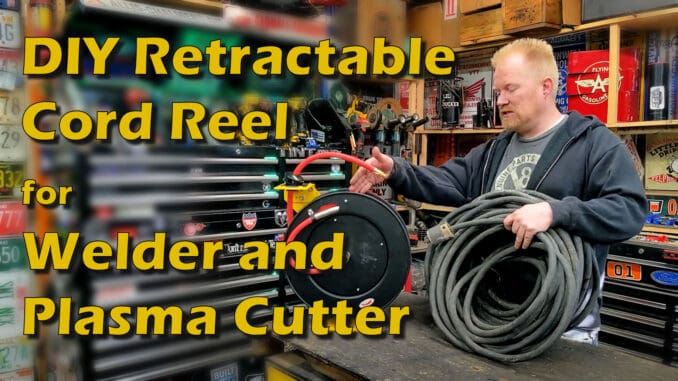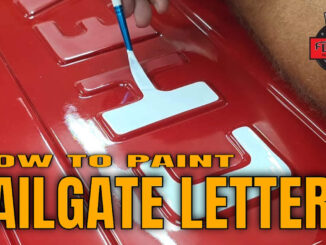
Purchasing a premade retractable cord reel for a welder can easily set you back more than $1,000. Yes, a Grand!
YouTuber we frequent, sixtyfiveford, builds a Retractable Welder Cord Reel for 1/10 the cost of buying one with a 50ft air hose reel, three-wire slip ring connector, and an already on-hand welder extension cord (8/4 SOOW). His total costs for the Hose Reel and Slip Ring fell under $100 ~ Your mileage may vary.
The Retractable Hose/Cord Reel
An example of a similar 50-foot retractable air hose reel from Amazon:
Retractable 50-foot air hose reels can also be found at Harbor Freight, but keep in mind that the DIABLO unit is better than the Central Pneumatic (the air hose is 100% junk) — the Diablo is worth the few extra bucks.
The Slip Ring Electrical Contact Joint
You don’t need a six-wire slip ring as used (end explained) in the video — a three-wire is more than adequate for a 50 amp “Welder Circuit.” An example of an acceptable slip ring contact joint from Amazon is this three wire unit rated at 30 amp at 100% duty cycle:
You may ask: “How is that adequate for a 50amp Nema 6-50 plug/circuit?”
The simple answer is that you do not need 100% duty cycle for welders and plasma cutters.
Generally, homeowner caliber welders at full output, draw sub 50 amps at 20-30% duty cycle, and this unit will easily handle that, and that’s at FULL power — When was the last time you ran your 240v welder at full power until the overload protection kicked in?
Of course, if you wanted to use this cord reel setup for powering an RV or similar 100% duty cycle appliance or apparatus, you will undoubtedly be limited by the 30 amps of the slip ring, and you should NOT exceed that.
10/3 or 8/3 would have been lighter and better for the actual cord on the reel, but the 8/4 wire used works was already on hand.
Receptacle Handle
A word of caution:
- Never run any cord reel at full power draw with multiple layers on the spool. Unroll them so they can have access to naturally cool when in use.
- Label the cord end and reel so future people know the limitations.
Editor’s Note: This and all sixtyfiveford’s projects are highly simplified for the videos and a ton of background testing is edited out. He takes precautions and tests to ensure his calculations are correct and everything will work safely for him and his equipment.
If you have no idea what he’s talking about when it comes to amperage, voltages, and wiring; do not attempt this. Want more info, do your own research. Here’s a great place to start: National Electrical Code NEC Article 630




